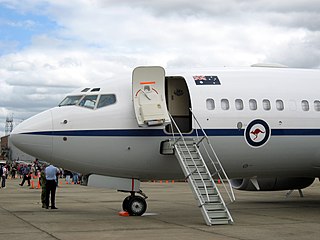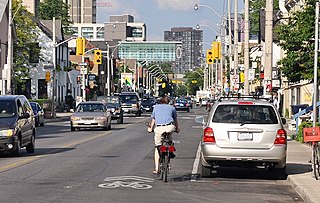 W
WThere are many forms of transport in Australia. Australia is highly dependent on road transport. There are more than 300 airports with paved runways. Passenger rail transport includes widespread commuter networks in the major capital cities with more limited intercity and interstate networks. The Australian mining sector is reliant upon rail to transport its product to Australia's ports for export.
 W
WThe Australasian Steam Navigation Company was a shipping company of Australia which operated between 1839 and 1887.
 W
WThe Australasian United Steam Navigation Company (AUSNC) was an Australian shipping company formed in 1887 by the merger of the Australasian Steam Navigation Company and the Queensland Steam Shipping Company and their fleets. It existed from 1887 to 1961.
 W
WAustralian standard pallets are square softwood or hardwood pallets that are standard in Australia and non-standard anywhere else in the world.
 W
WA bullbar or push bumper is a device installed on the front of a vehicle to protect its front from collisions, whether an accidental collision with a large animal in rural roads, or an intentional collision by police with another vehicle. They range considerably in size and form, and are normally composed of welded steel or aluminium tubing, or, more recently, moulded polycarbonate and polyethylene materials. The "bull" in the name refers to cattle, which in rural areas sometimes roam onto rural roads and highways.
 W
WCobb & Co was the name used by many successful sometimes quite independent Australian coaching businesses. The first was established in 1853 by American Freeman Cobb and his partners. The name Cobb & Co grew to great prominence in the late 19th century, when it was carried by many stagecoaches carrying passengers and mail to various Australian goldfields, and later to many regional and remote areas of the Australian outback. The same name was used in New Zealand and Freeman Cobb used it in South Africa.
 W
WAn electric vehicle charging network is an infrastructure system of charging stations to recharge electric vehicles. Many government, car manufacturers, and charging infrastructure providers sought to create networks. As of December 2016, Estonia remained the only country to have completed a nationwide public electric charging network. As of November 2020 the largest fast-charging location was in California on the Tesla Supercharger network, with 56 charging stalls.
 W
WThe Minister for Infrastructure, Transport and Regional Development in the Government of Australia is Barnaby Joyce, serving since 22 June 2021. Joyce is also the leader of the National Party and Deputy Prime Minister of Australia.
 W
WThe adoption of plug-in electric vehicles in Australia is driven mostly by state based electric vehicle targets and monetary incentives to support the adoption and deployment of low or zero emission vehicles. The monetary incentives include electric vehicle subsidies, interest free loans, registration exemptions, stamp duty exemptions, the luxury car tax exemption and discounted parking for both private and commercial purchases. The Clean Energy Finance Corporation, energy providers and car insurance providers also offer their own financial incentives for electric vehicle purchases. The Victorian and New South Wales governments target 50% of new car sales to be electric vehicles by 2030. The New South Wales Liberal Government also aim for the vast majority of new cars sold in the state to be electric vehicles by 2035. The New South Wales Government were also believed to be planning a date to ban the sale of internal combustion-engine vehicles. While the South Australian Liberal Government aim for 100% of new car sales to be electric vehicles by 2035, and plan to ensure electric vehicles are mainstream and the "common choice" for new vehicle purchases in 2030. The Australian states with EV sales targets represent approximately 65% of the Australian population. This means 65% of the Australian population has a target to reach more than 50% EV car sales by 2030.
 W
WThe Royal Australian Air Force operates a number of specialised aircraft to transport the Queen of Australia and other members of the Royal Family, the Governor General of Australia, the Prime Minister of Australia, senior members of the Australian government and other dignitaries.
 W
WA shared lane marking, shared-lane marking or sharrow is a street marking installed at locations in New Zealand, Australia, Canada, Spain, or the United States. This marking is placed in the travel lane to indicate where people should preferably cycle.
 W
WTaxis in Australia are highly regulated by each Australian state and territory, with each state and territory having its own history and structure. In December 2014, there were 21,344 taxis in Australia. Taxis in Australia are required to be licensed and are typically required to operate and charge on a fitted taximeter. Taxi fare rates are set by State or Territory governments. A vehicle without a meter is generally not considered to be a taxi, and may be described, for example, as a hire car, limousine, carpool, etc. Most taxis today are fuelled by liquid petroleum gas. A2B Australia owns and operates the Cabcharge payment system, which covers 98% of taxis in Australia, and operates one of Australia's largest taxi networks.